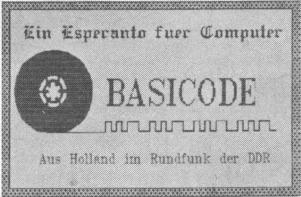Related Research Articles
uniq is a utility command on Unix, Plan 9, Inferno, and Unix-like operating systems which, when fed a text file or standard input, outputs the text with adjacent identical lines collapsed to one, unique line of text.

MSX is a standardized home computer architecture, announced by ASCII Corporation on June 16, 1983. It was initially conceived by Microsoft as a product for the Eastern sector, and jointly marketed by Kazuhiko Nishi, the director at ASCII Corporation. Microsoft and Nishi conceived the project as an attempt to create unified standards among various home computing system manufacturers of the period, in the same fashion as the VHS standard for home video tape machines. The first MSX computer sold to the public was a Mitsubishi ML-8000, released on October 21, 1983, thus marking its official release date.
In computer science, dynamic recompilation is a feature of some emulators and virtual machines, where the system may recompile some part of a program during execution. By compiling during execution, the system can tailor the generated code to reflect the program's run-time environment, and potentially produce more efficient code by exploiting information that is not available to a traditional static compiler.

openMSX is a free software emulator for the MSX architecture. It is available for multiple platforms, including Microsoft Windows and POSIX systems such as Linux

wc is a command in Unix, Plan 9, Inferno, and Unix-like operating systems. The program reads either standard input or a list of computer files and generates one or more of the following statistics: newline count, word count, and byte count. If a list of files is provided, both individual file and total statistics follow.
BrMSX was an MSX emulator for DOS, written by Ricardo Bittencourt. It was first released in 1997, and at the time was regarded as the fastest, most accurate MSX emulator.

The Philips P2000T home computer was Philips' first real entry in the home computer market in 1980, after the Philips Videopac G7000 game system which they already sold to compete with the Atari 2600 and similar game systems. There was also a P2000M version with an additional 80-column text card for use with a monochrome monitor. This version shipped with a monitor cabinet also housing a dual 5.25" floppy drive. The P2000C version, introduced in 1982, was portable.
tail is a program available on Unix, Unix-like systems, FreeDOS and MSX-DOS used to display the tail end of a text file or piped data.
In computing, sleep is a command in Unix, Unix-like and other operating systems that suspends program execution for a specified time.
Gradius is a series of shooter video games, introduced in 1985, developed and published by Konami for a variety of portable, console and arcade platforms. In many games in the series, the player controls a ship known as the Vic Viper.
Jun Suemi is a Japanese illustrator, born in Ōita, Ōita, Japan.

BASICODE was a computer project intended to create a unified standard for the BASIC programming language. BASIC was available on many popular home computers, but there were countless variants that were mostly incompatible with each other. The project was initiated in 1980 by Hobbyscoop, a radio program of the Dutch broadcasting organisation Nederlandse Omroep Stichting (NOS).
MSX-DOS is a discontinued disk operating system developed by Microsoft's Japan subsidiary for the 8-bit home computer standard MSX, and is a cross between MS-DOS v1.25 and CP/M-80 v2.2.
Moonsound is the name of a sound card released for the MSX home-computer system at the Tilburg Computer Fair in 1995. It was designed by electronic engineer Henrik Gilvad and produced by Sunrise Swiss on a semi-hobby basis.
Engine Software is a Dutch video game developer, located in Doetinchem, Netherlands, which specialized in handheld video games and digital platforms until 2011. In the period after (2011-present) they have become more active and known for high-end ports and adaptations of games to modern consoles, mobile, PC and streaming services like Stadia and Luna. Some of the best known games they have worked on include Puzzle Quest for the Nintendo DS, Terraria for PlayStation 3, PlayStation 4, PlayStation Vita, Xbox 360, Xbox One and Wii U, Killer7 Remastered for PC, Ni No Kuni: Wrath of the White Witch for Nintendo Switch and No More Heroes / No More Heroes 2 for Nintendo Switch.

A video game console emulator is a type of emulator that allows a computing device to emulate a video game console's hardware and play its games on the emulating platform. More often than not, emulators carry additional features that surpass limitations of the original hardware, such as broader controller compatibility, timescale control, easier access to memory modifications, and unlocking of gameplay features. Emulators are also a useful tool in the development process of homebrew demos and the creation of new games for older, discontinued, or rare consoles.

The Dingoo is a handheld gaming console that supports music and video playback and open game development. The system features an on-board radio and recording program. It was sold to consumers in three colors: white, black, and pink. It was released in February 2009 and had sold over 1 million units.

Nemesis 2 is a side-scrolling shoot 'em up video game released for the MSX computer in 1987 by Konami. The game is a sequel to Nemesis, the MSX version of Gradius, but is unrelated to the arcade game Gradius II. This version was ported to the X68000 computer under the name Nemesis '90 Kai, with some graphical and aural enhancements.

The GCW Zero is a Linux-based open-source handheld video game console created by a start up, Game Consoles Worldwide. The GCW Zero was funded by a successful crowdfunding campaign on kickstarter.com on 29 January 2013 with US$238,499 collected, originally aiming for $130,000. The project was created by Justin Barwick. The device was eventually released that year.
References
- ↑ Fayzullin, Marat. "fMSX: Portable MSX Emulator". komkon.org. Retrieved 2006-12-25.